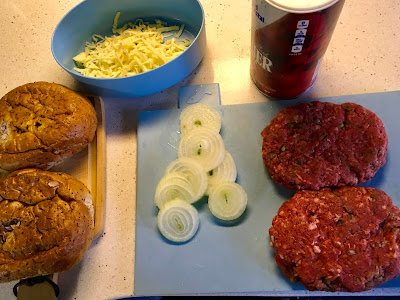"Having slaughtered, plucked, drawn and washed the chicken according to the
caïda, or tradition, fill its cavity with a stuffing..." I read these instruction in the recipe "Chicken stuffed with almonds, semolina, and Raisins" in
Traditional Moroccan Cooking: Recipes from Fez, p. 105.
 |
Traditional Moroccan Cooking, published 1958.
Arabesque, published 2005. |
When I saw these words, I knew that this recipe wasn't quite right for my kitchen. Obviously, it's no trouble for me to buy a chicken that is already dead and clean. However, my chicken from Whole Foods was far too young and tender to be cooked as described in Madame Guisaudeau's sixty-year-old cookbook. The spices and flavors of the recipe, however were tempting, so I combined this recipe with "Roast Chicen with Couscous, Raisin, and Almond Stuffing" in
Arabesque: A Taste of Morocco, Turkey, and Lebanon, by Claudia Roden, p. 92. I was very pleased with the result, and it seemed to please my dinner guests too.

One change I made: I substituted rice for the couscous or semolina in the original recipes. The seasonings were saffron, cinnamon, sugar, and orange blossom water. Blanched toasted almonds, raisins, chopped dried apricots (my own addition), and a large piece of butter added to the flavor profile. Following the instructions in the recipe in
Arabesque, I steamed the rice separately from the chicken and then tossed it with the other ingredients.
The chicken was first rubbed with olive oil, lemon juice, and the Moroccan spice blend ras el hanout. After the first hour of cooking at 400º F, I brushed it with honey to create a nice brown skin. As I often do, I spatchcocked the chicken before roasting, which enables it to cook more evenly than a whole chicken.
The recipe in
Traditional Moroccan Cooking suggests actually stuffing the chicken with the semolina mixture, but I think that's more appropriate for roasting the less-tender bird. Although the techniques were somewhat different, I think these are both variants of the same recipe. I've been curious to try some of the recipes in both cookbooks, and this was a very delicious start at using them.


















































